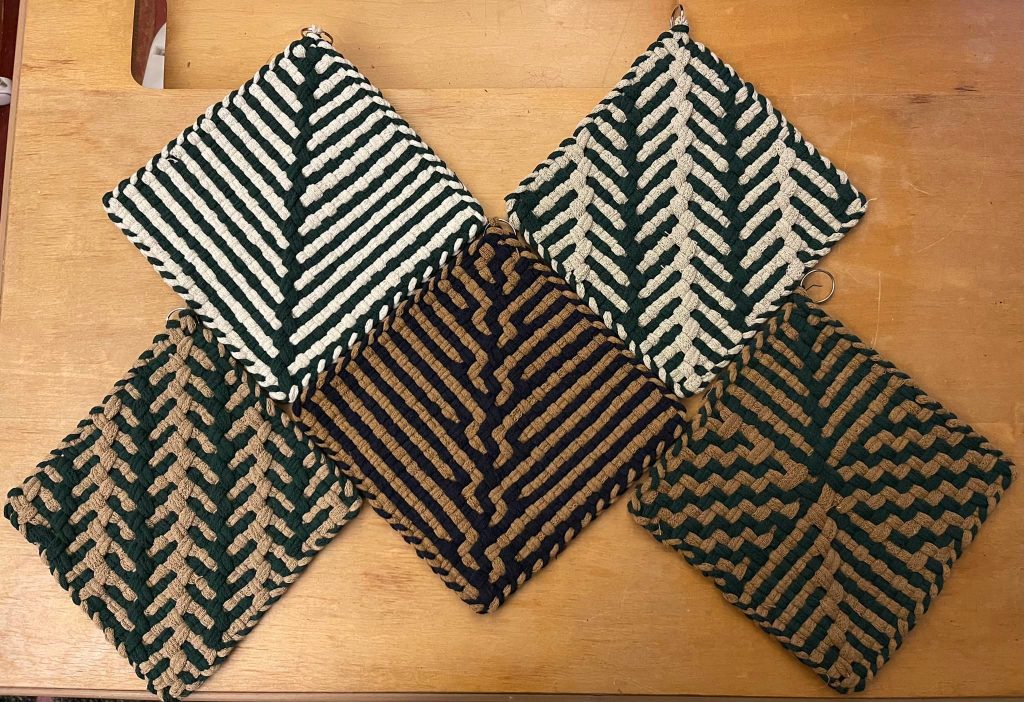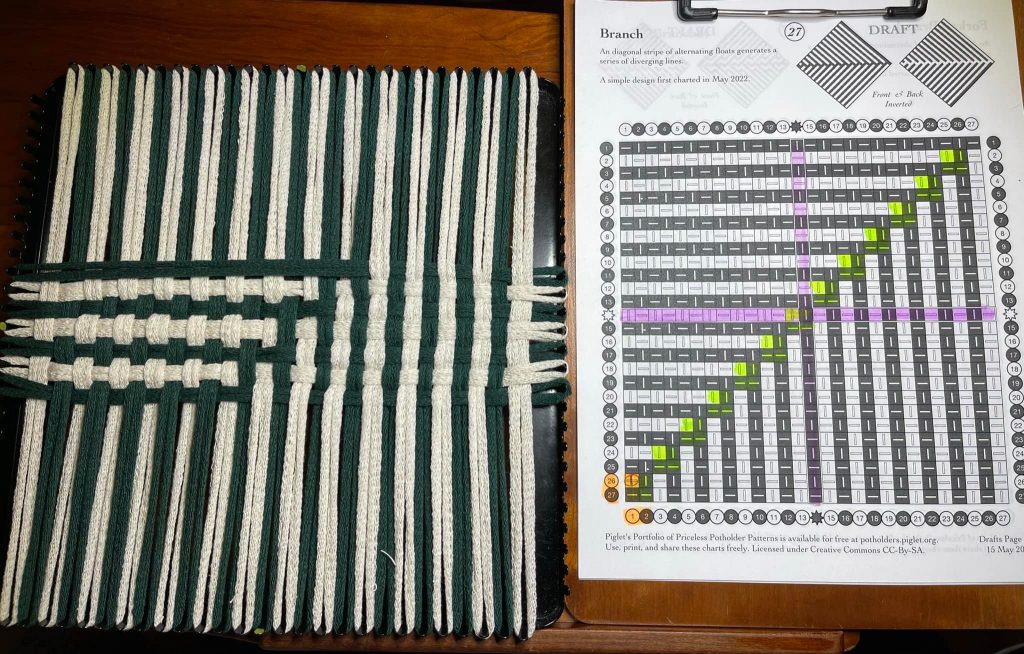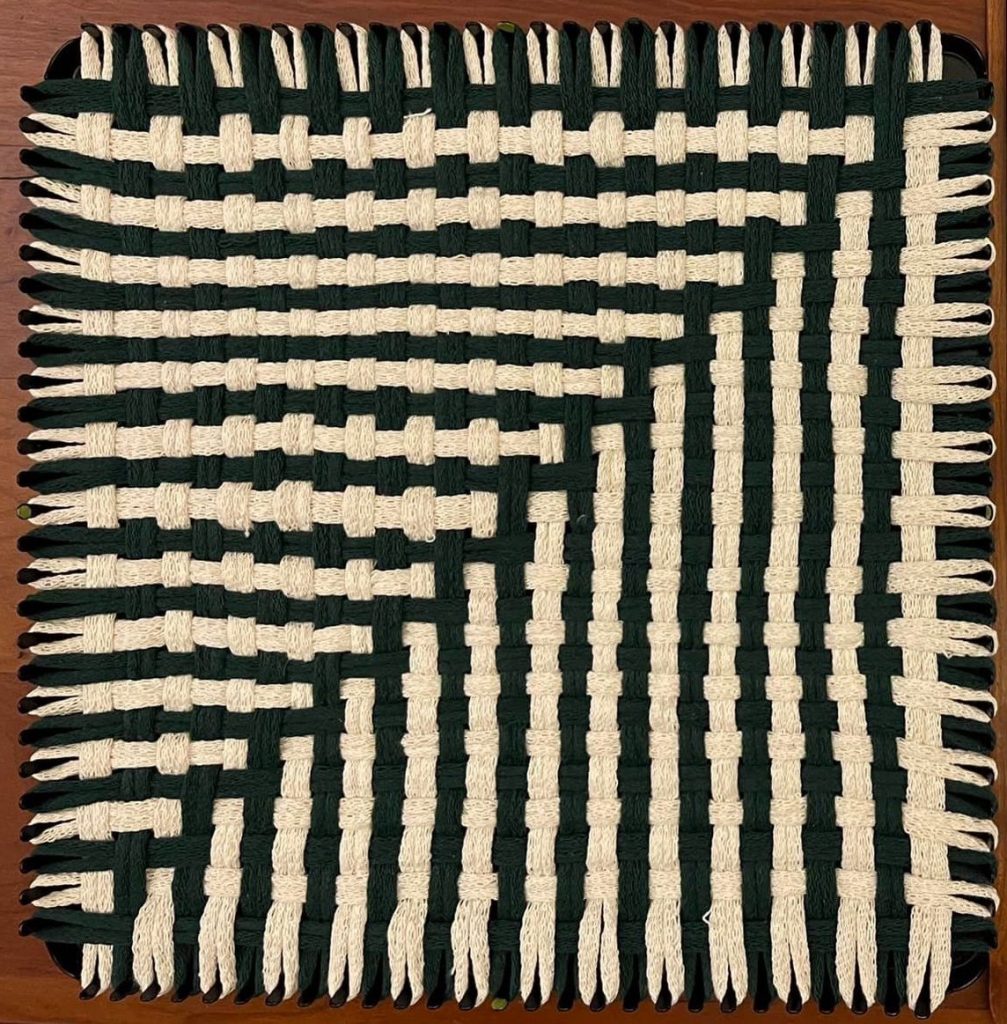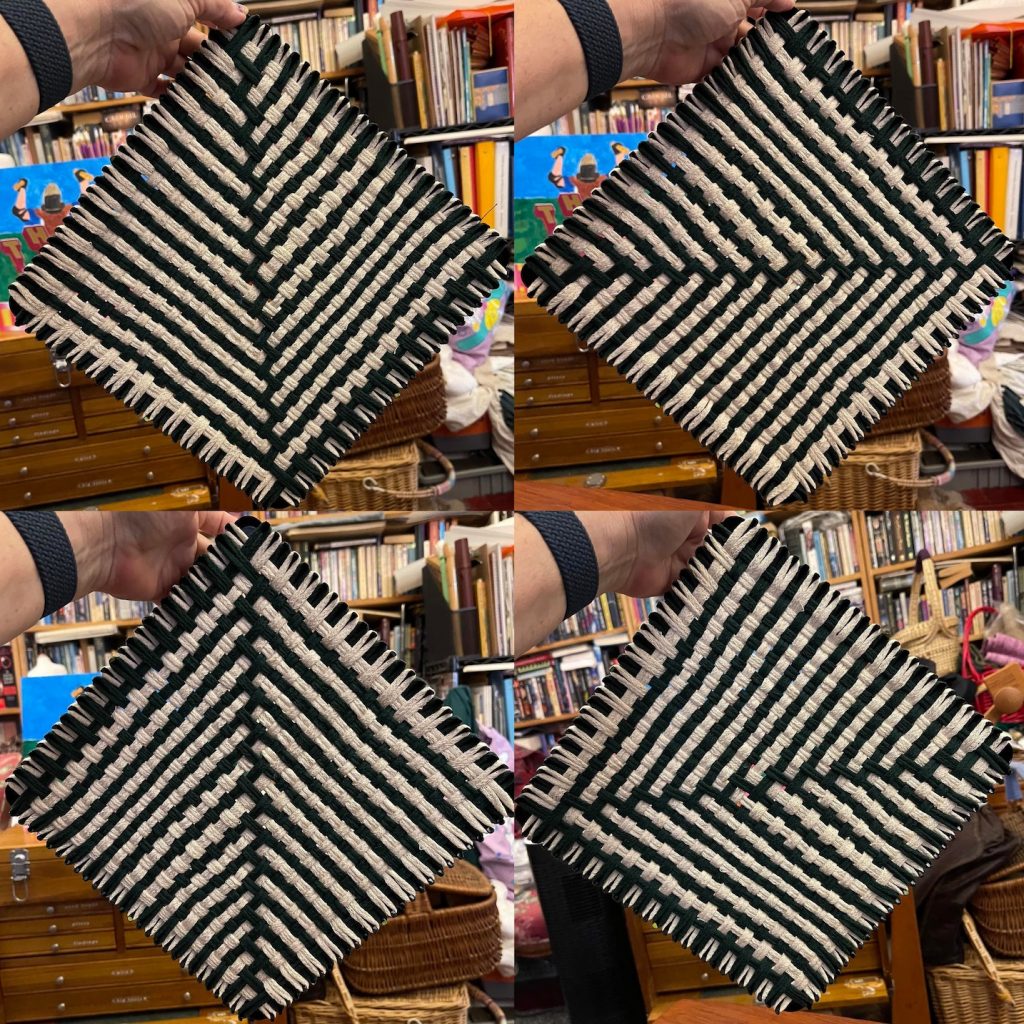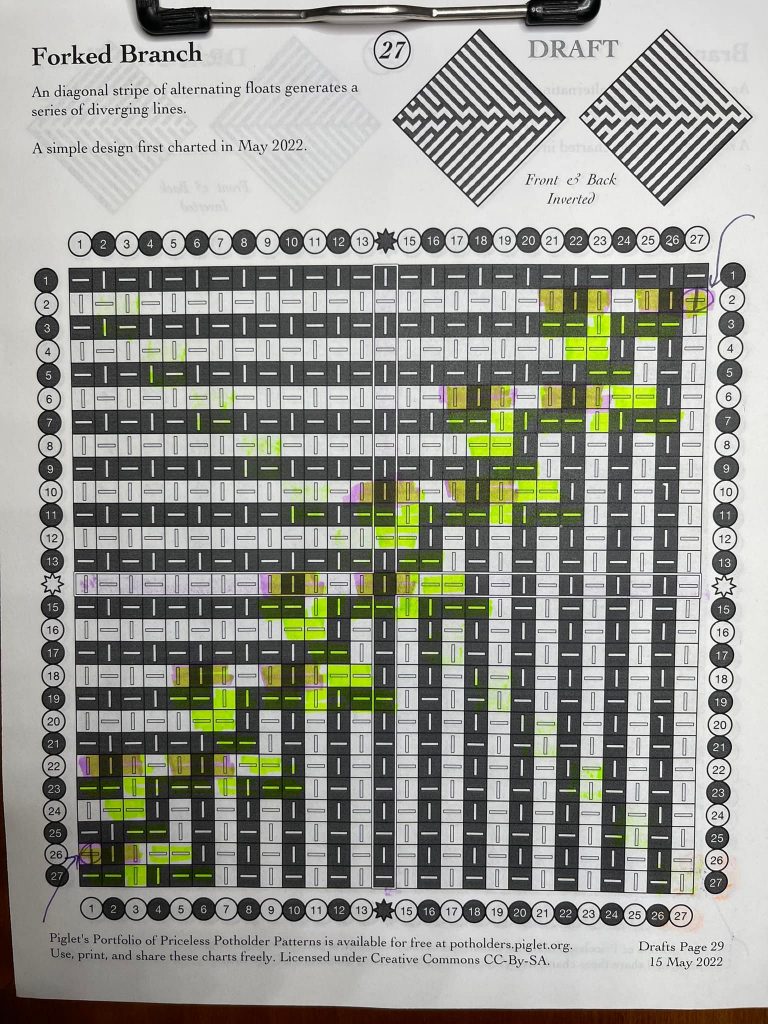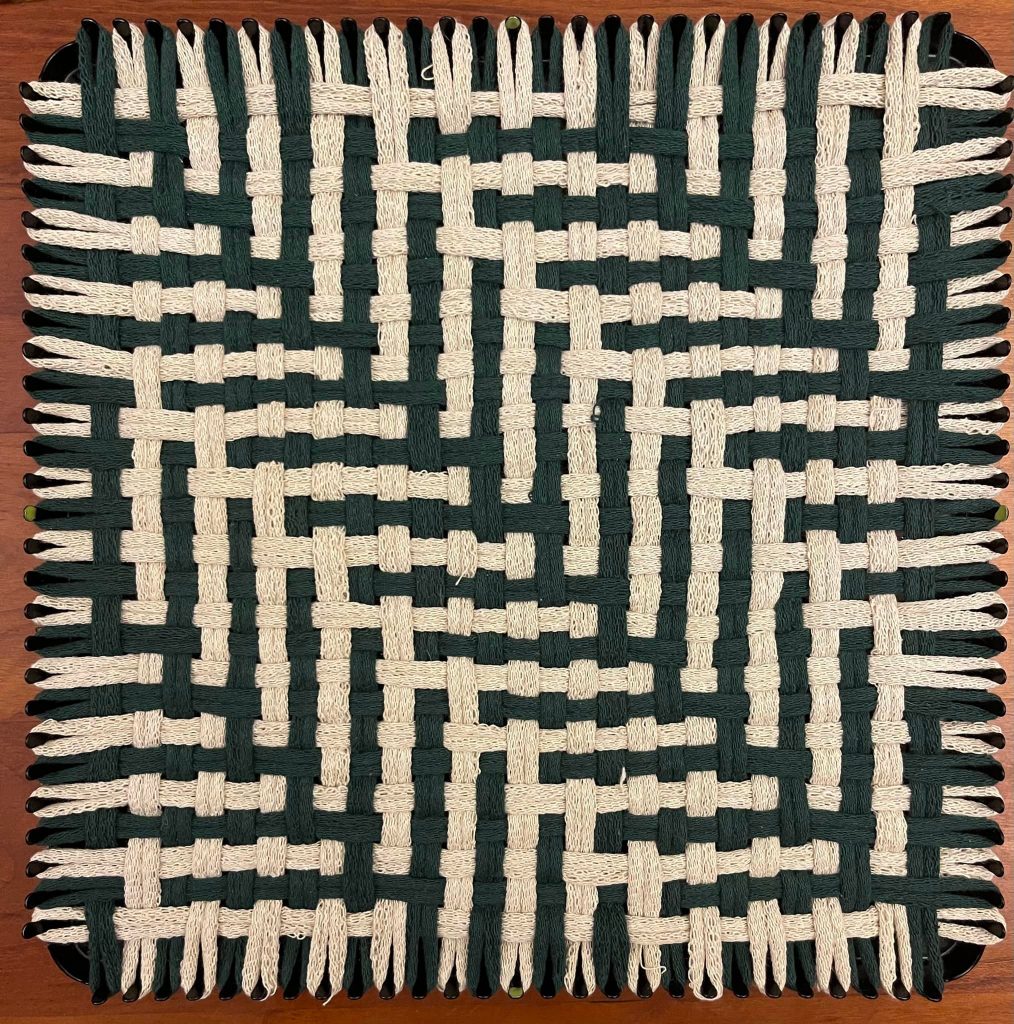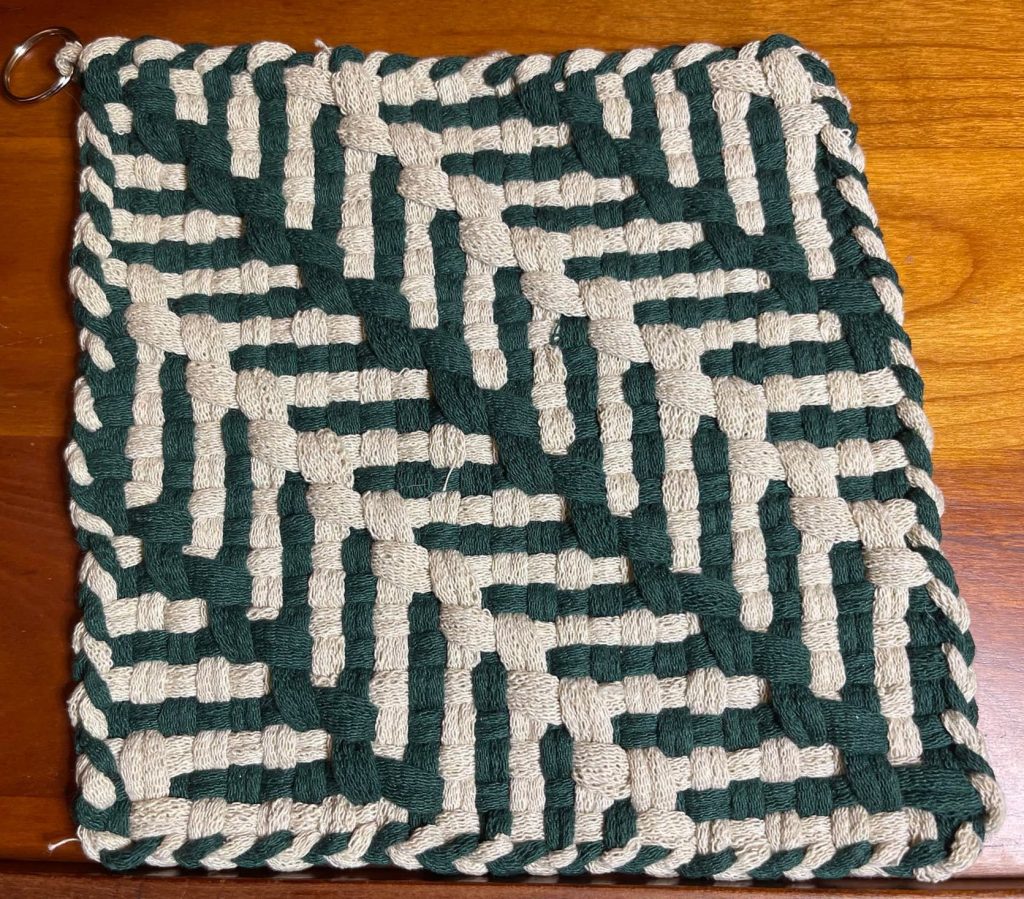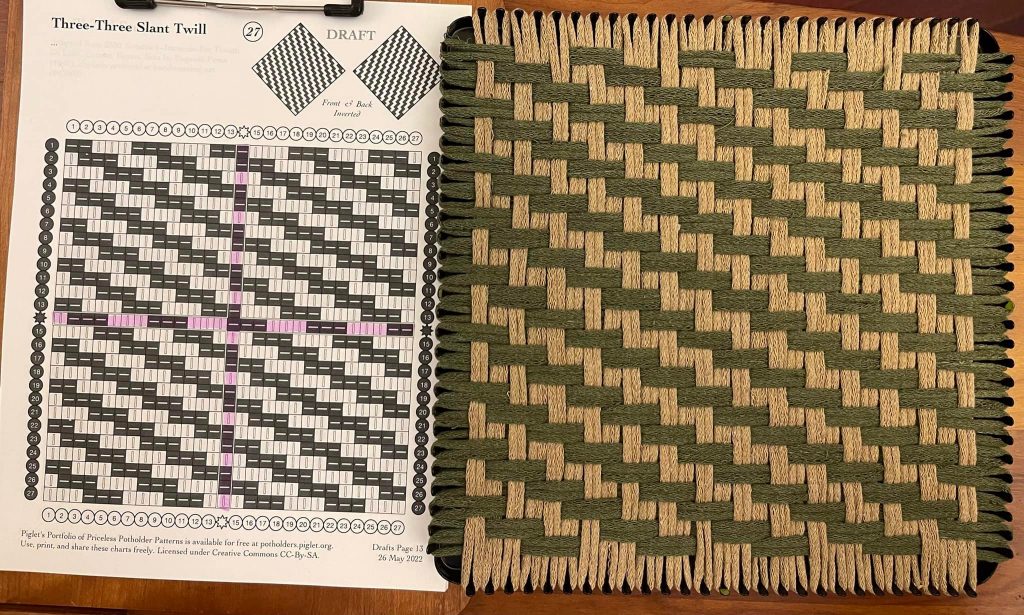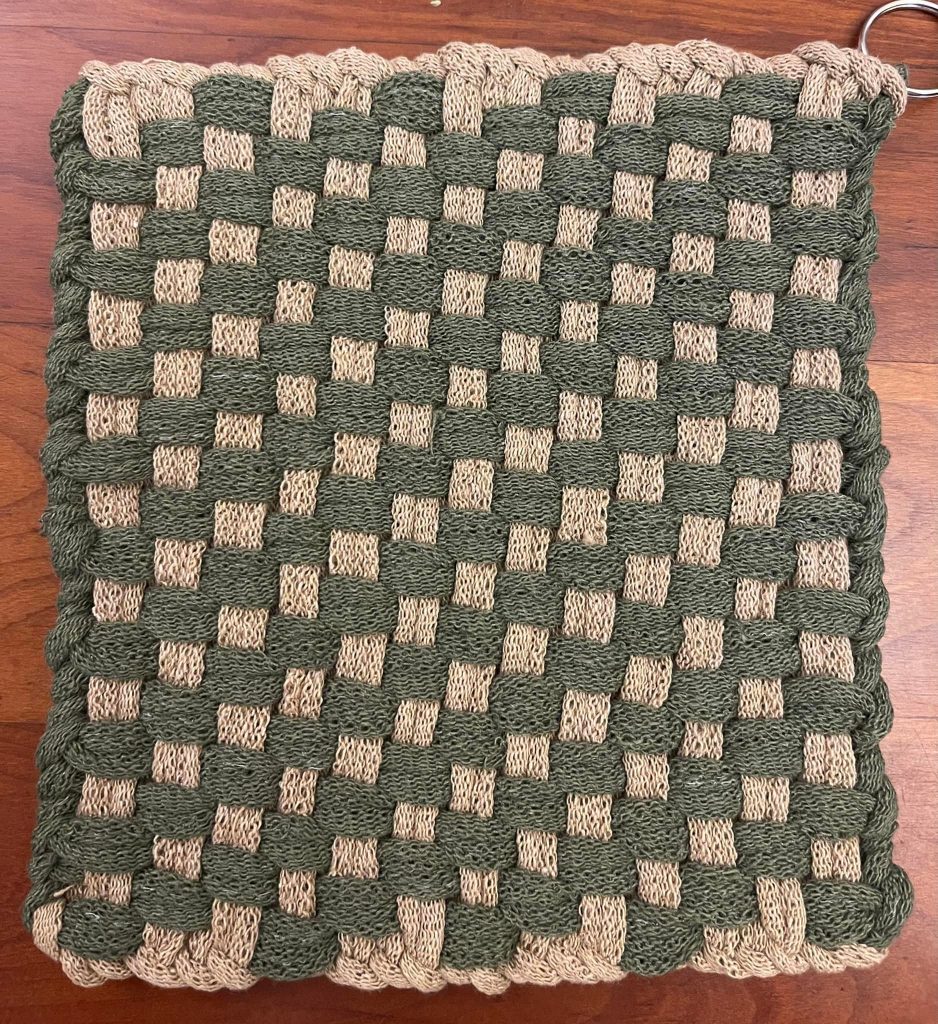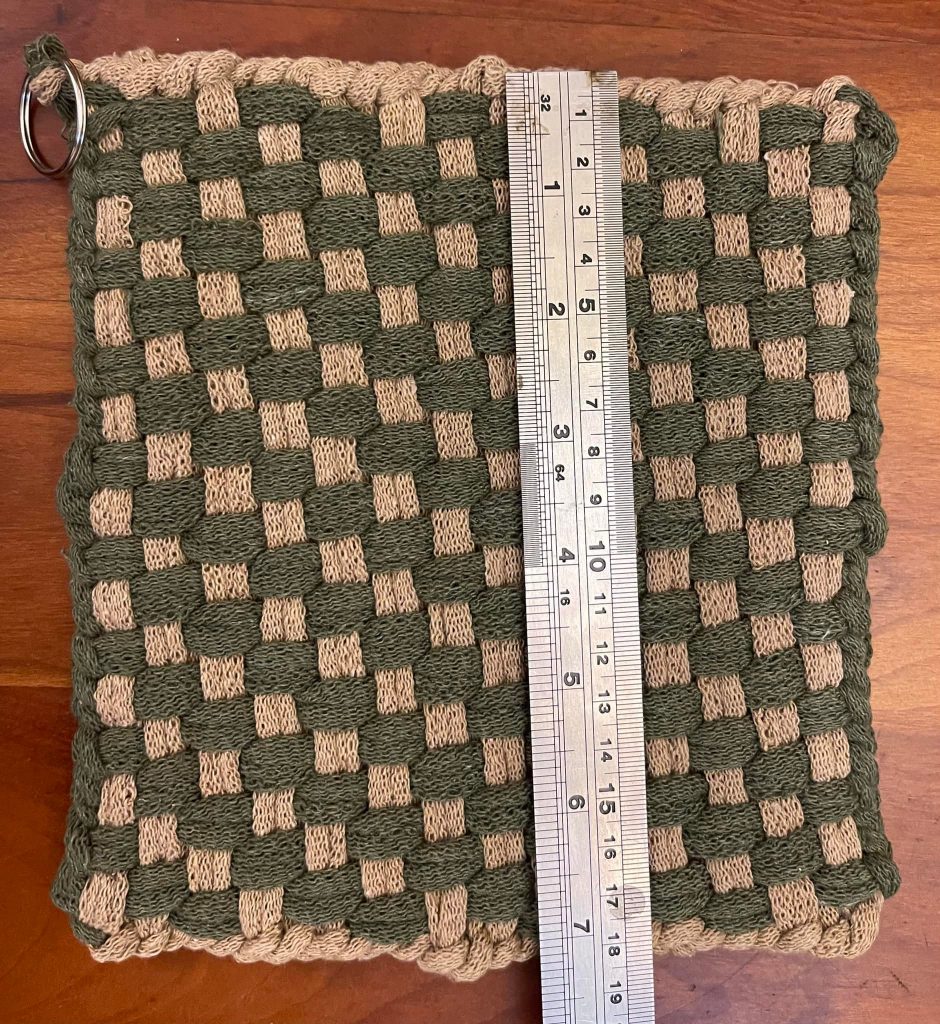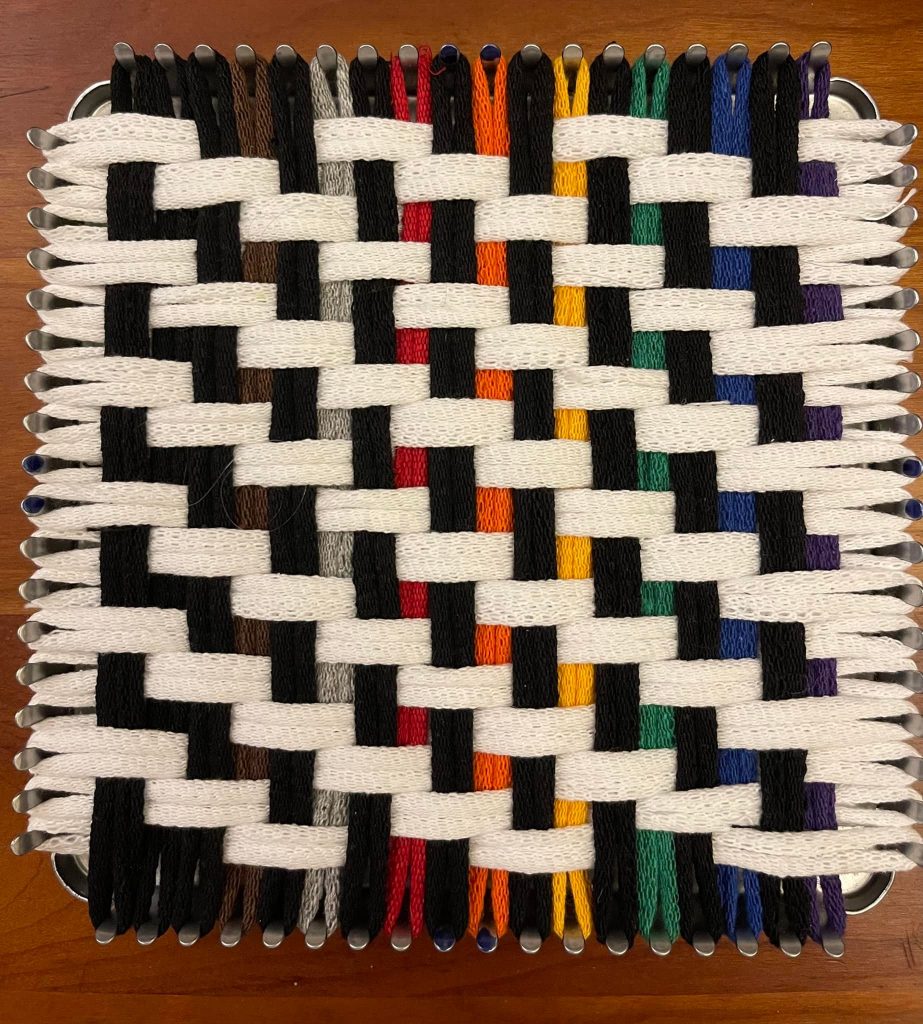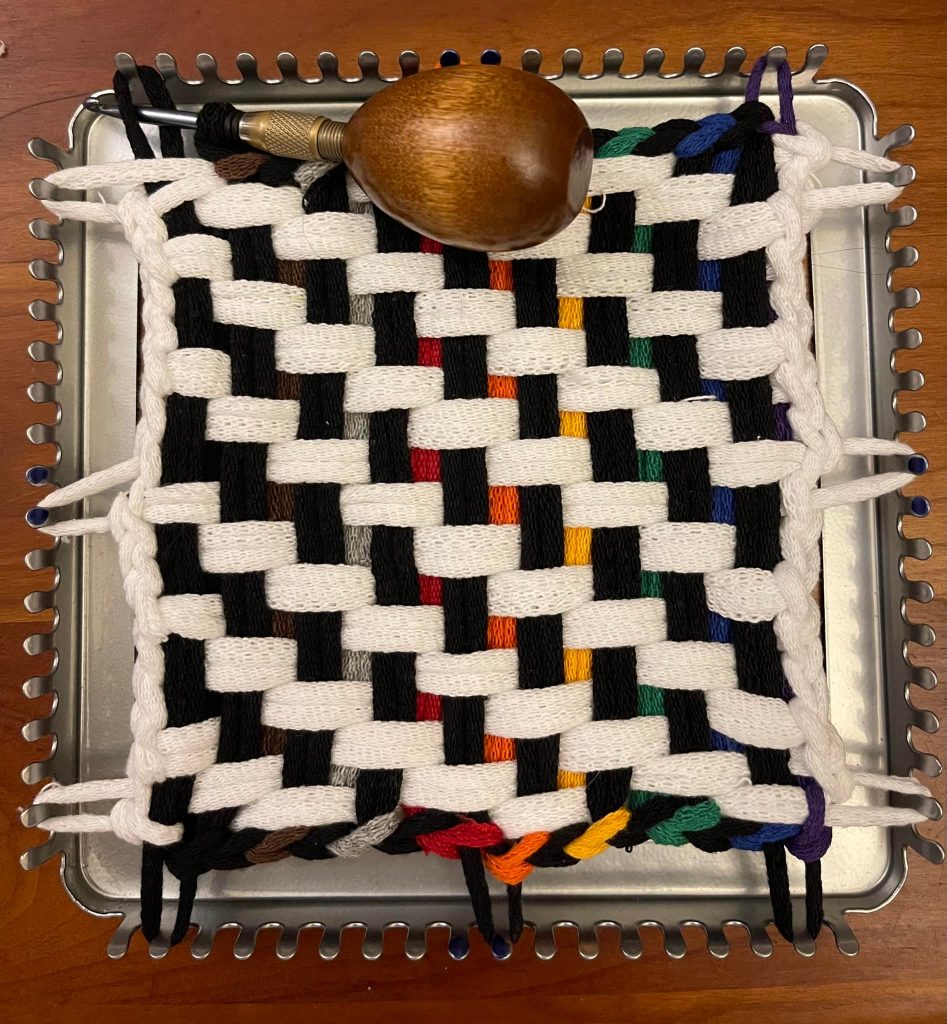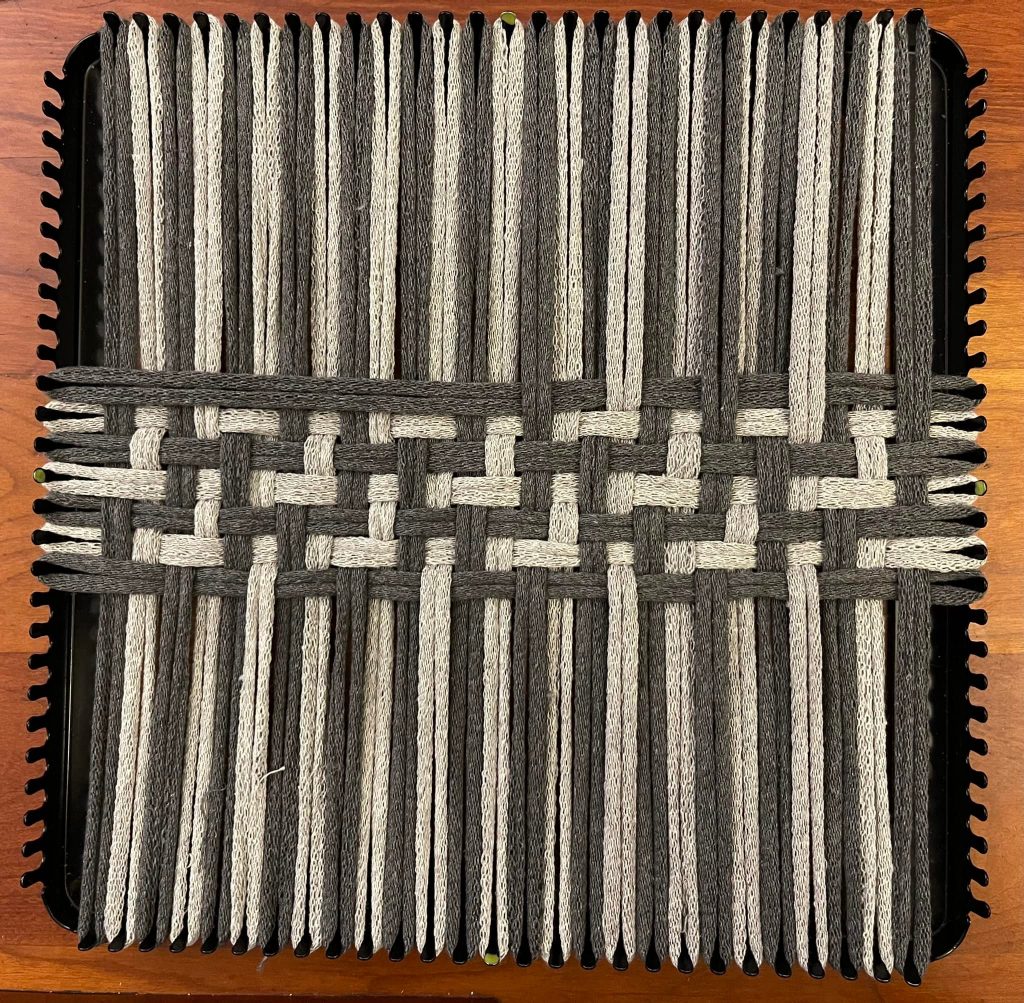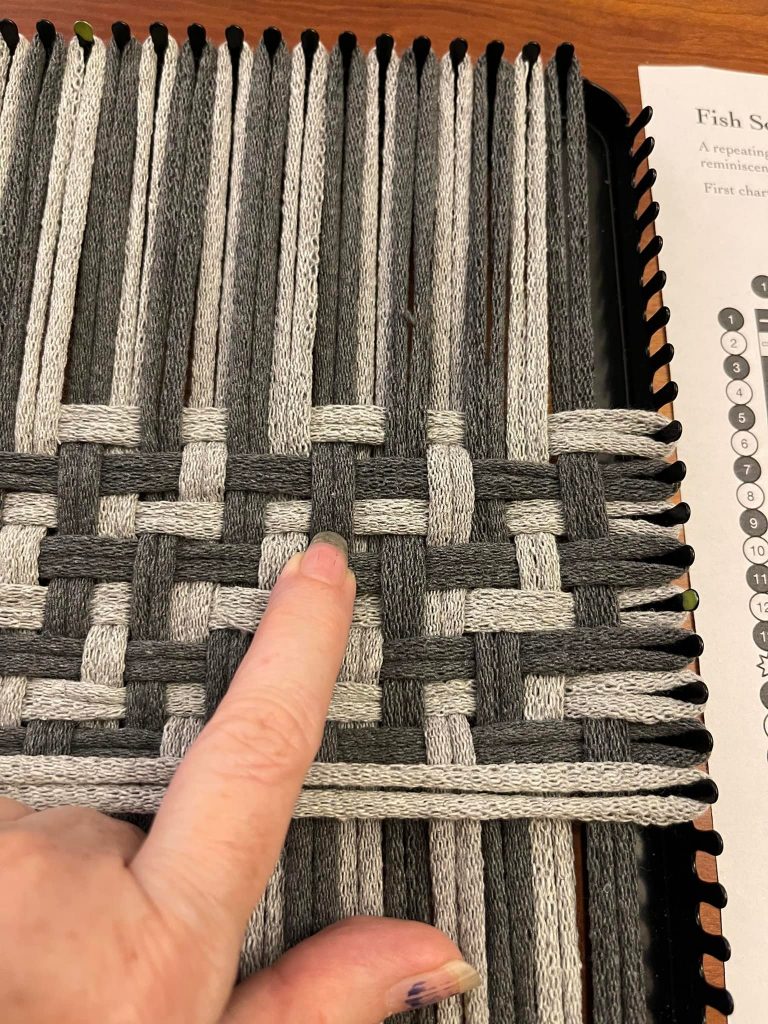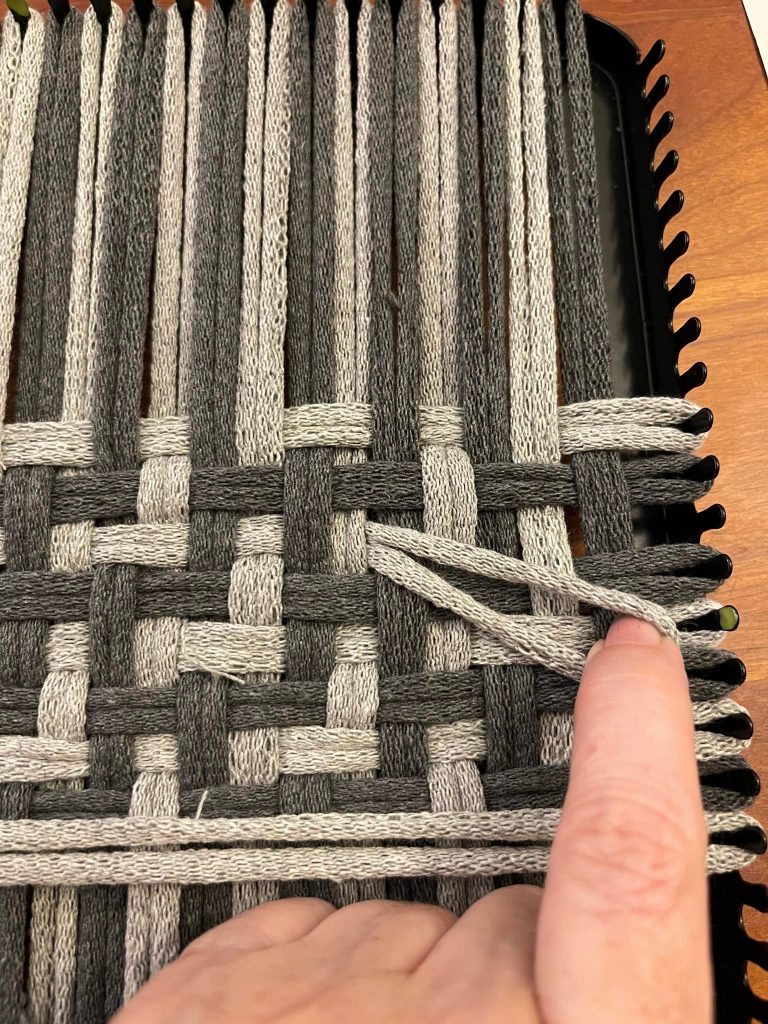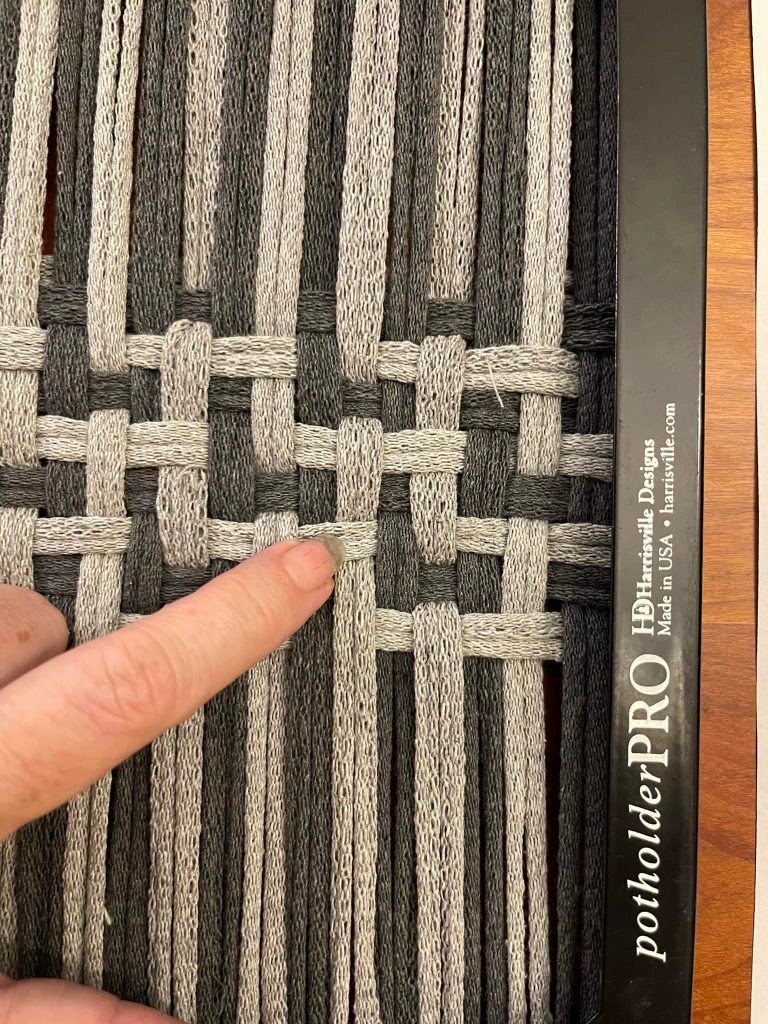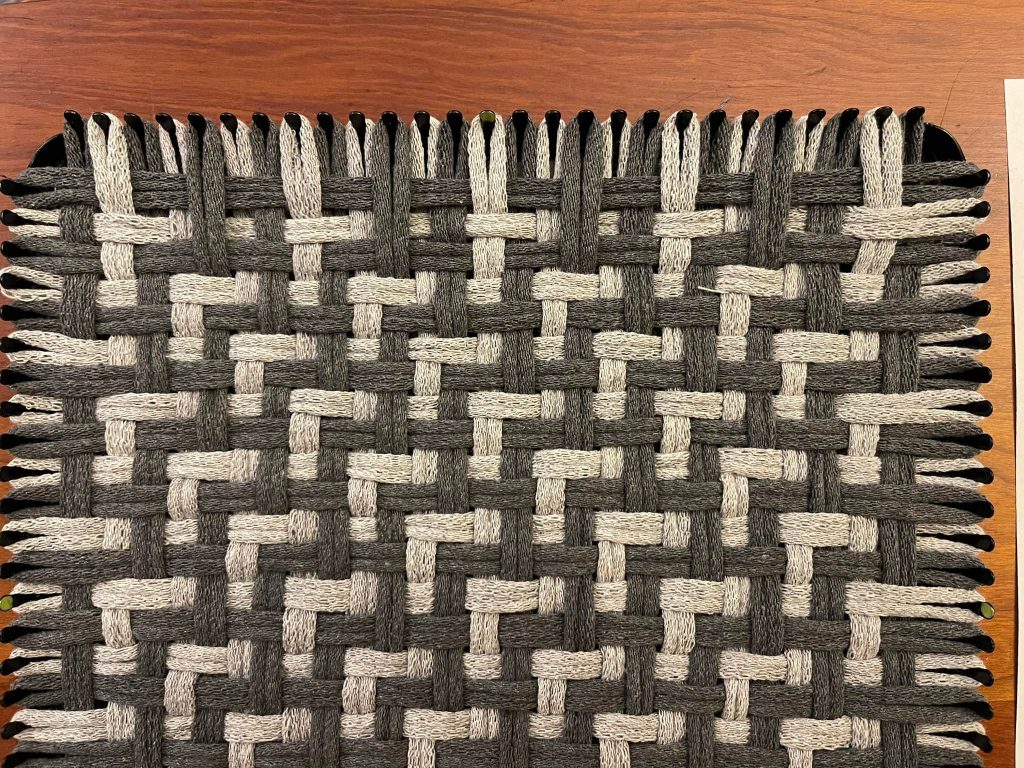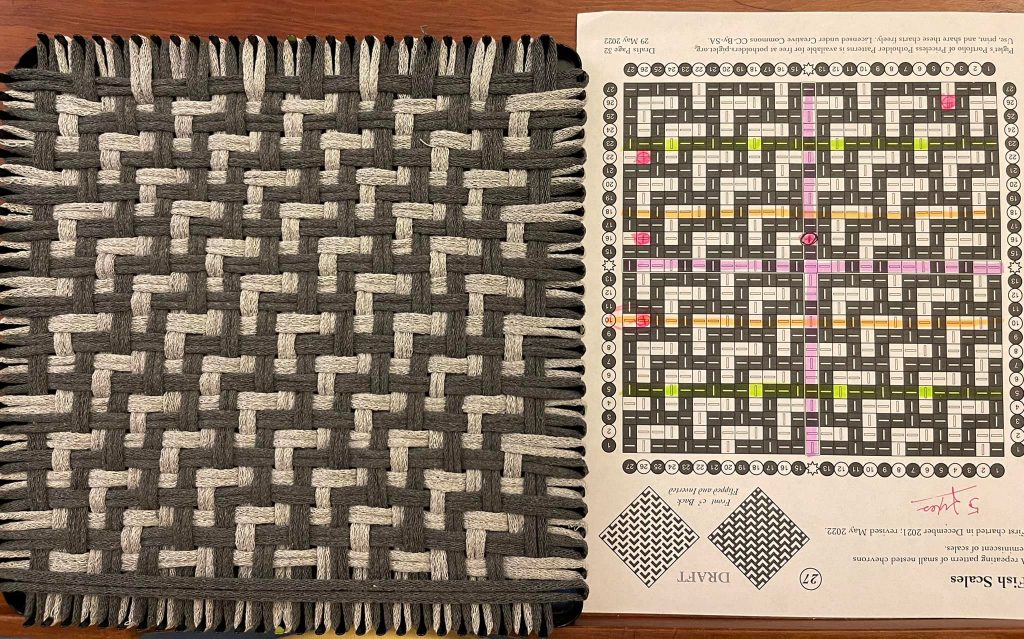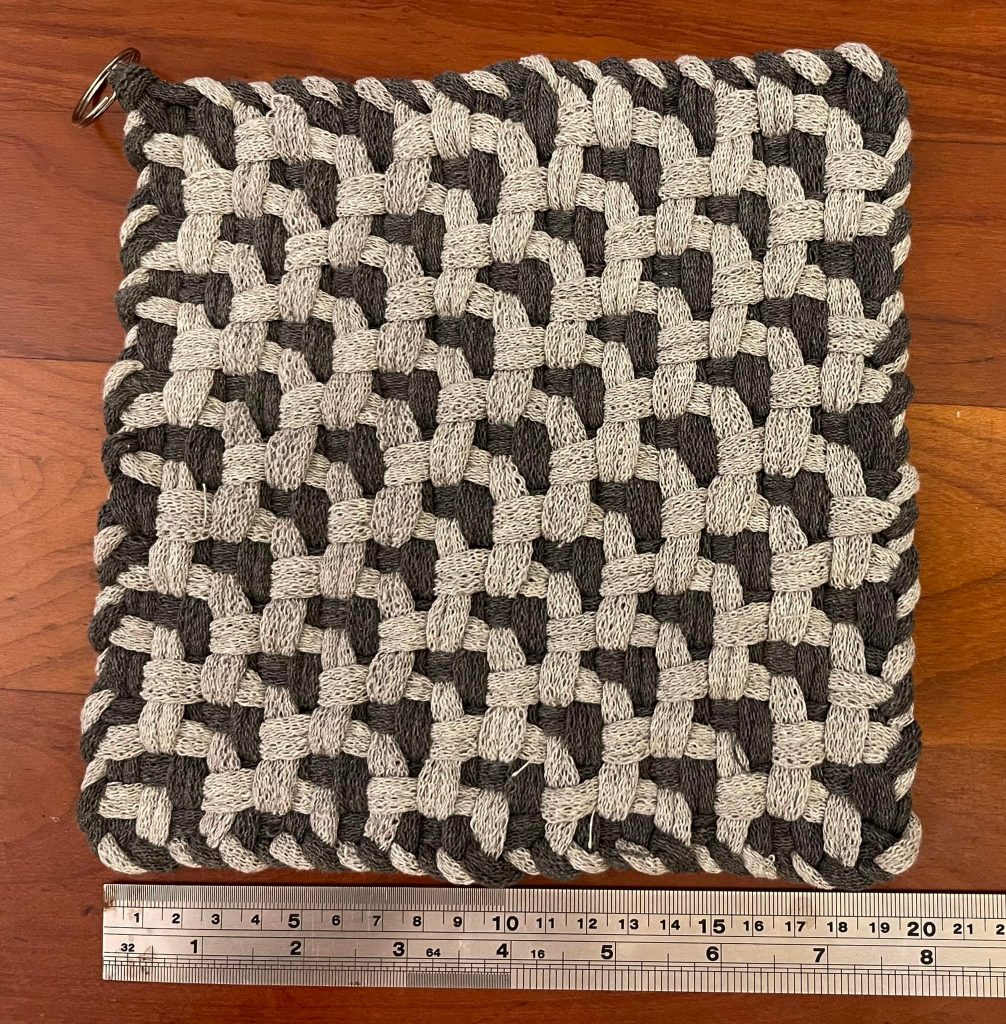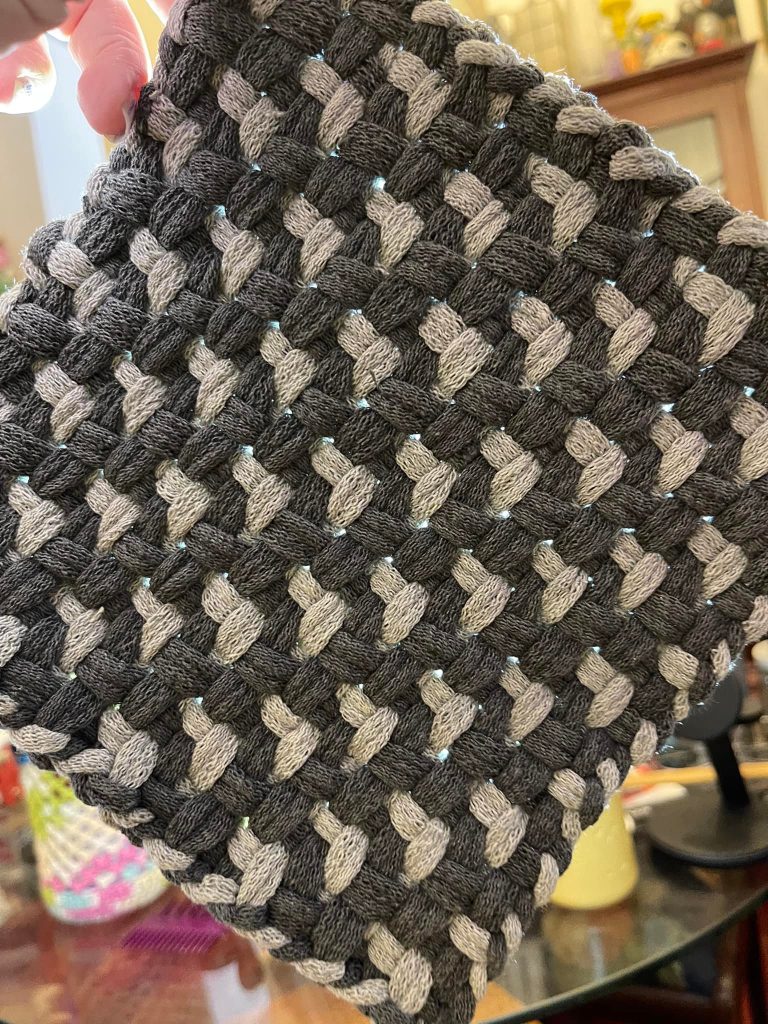The June edition of our potholder design collection has been posted as a downloadable PDF.
It contains 89 designs, many at multiple sizes, for a total of 139 charts.
Of those, 15 designs are new since the May edition:
- A lovely repeating tile design (Roses and Thorns);
- Two styles of nested chevrons (Fish Scales, Three-Color Fish Scales);
- Larger heart variations (Super Hearts, Pulsating Heart);
- A forest of branches (Branch, Three Parallel Branches, Five Parallel Branches, Seven Parallel Branches, Forked Branch, Branch and Root);
- Extra-thick twill weaves (Three-Three Twill, Three-Three Twill Waves, Three-Three Shift Twill, Magical Three-Three Twill).
Most of those are described in recent posts by Piglet here and on Facebook, including photos as well as commentary on the weaving experience and resulting fabric.
The table of contents has been reorganized to group related designs together, which will hopefully make it easier to find charts you might be interested in.
And the online table of contents now highlights any designs added since the last edition, making it easier to find (and print) only the newest pages.
Enjoy!










